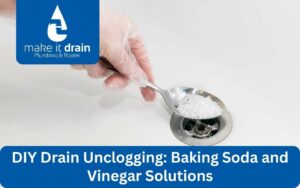A leaky shower head can be more than just a minor annoyance. It can waste water, increase your utility bill, and even lead to other problems if not addressed promptly. Fortunately, with a little guidance and the right tools, many homeowners can fix a dripping shower head without calling a professional. In this article, Our plumbing company offers a step-by-step guide to diagnosing and repairing that pesky shower head leak.
1. Gather the Necessary Tools
Before beginning any plumbing repair, it’s essential to have the right tools on hand. For this task, you’ll need:
– An adjustable wrench or pliers
– Teflon tape (also known as plumber’s tape)
– A cloth or rag
– A bucket or bowl (optional, for catching any residual water)
2. Turn Off the Water Supply
To prevent any unexpected sprays or spills, always turn off the water supply before starting your repair. This can usually be done by locating the shut-off valve in your bathroom or behind the shower and turning it clockwise. After turning off the water, turn on the shower to drain any remaining water.
3. Remove the Shower Head
Wrap the cloth around the base of the shower head to protect its finish from scratches. Using your adjustable wrench or pliers, grip the shower head’s base and turn it counterclockwise to unscrew and remove it. If it’s tight, be patient and apply consistent pressure to avoid damaging your plumbing.
4. Check for Debris or Mineral Buildup
Once the shower head is removed, inspect the threads for debris or mineral buildup. Over time, mineral deposits from hard water can accumulate and cause blockages or leaks. If you notice any buildup, you can soak the shower head in a solution of equal parts white vinegar and water for several hours. After soaking, use an old toothbrush to gently scrub away any lingering deposits.
5. Replace the Teflon Tape
It’s a good practice to replace the Teflon tape whenever you remove the shower head. Start by removing the old tape from the threads of the shower arm. Once clean, wrap the new Teflon tape around the threads in a clockwise direction, ensuring it’s snug but not overly tight.
6. Reattach the Shower Head
With the new Teflon tape in place, screw the shower head back onto the shower arm. Start by hand to ensure the threads align correctly, then use your wrench or pliers and cloth to tighten it. Be careful not to overtighten, as this can damage the threads or the shower head itself.
7. Test for Leaks
Turn the water supply back on and run the shower. Observe the connection between the shower head and arm to ensure there are no more leaks. If there’s still a drip, you may need to repeat the process or consider that there could be a more extensive issue at play.
Conclusion
Fixing a leaking shower head can be a straightforward DIY task with the right approach and tools. By following the steps outlined by Make It Drain Plumbing and Rooter, you can save water, money, and the headache of a persistent drip. If your leak persists or you’re unsure about any step, don’t hesitate to call our plumbers. We’re always here to help and ensure your plumbing is in top shape!
Remember, regular maintenance and addressing minor issues as they arise can save you from more significant, costlier problems down the line. Stay proactive and keep those showers leak-free! Call us for Emergency Plumbing Services.






